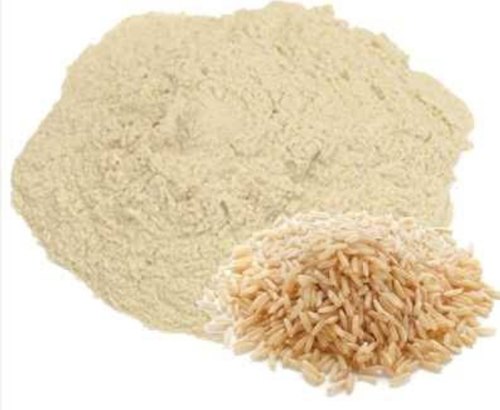Contents
- 1 Exploring the Production Process and Health Benefits of Rice Protein Concentrate
- 2 Prof. Aécio D’Silva, Ph.D AquaUniversity
- 3
- 4 The Production Process of Rice Protein Concentrate
- 4.1 Harvesting and Milling:
- 4.2 Extraction and Filtration:
- 4.3 Alkaline Extraction:
- 4.4 Enzymatic Hydrolysis:
- 4.5 Fermentation:
- 4.6 Ultrafiltration of Rice Protein Concentrate:
- 4.7 Acid Precipitation of Rice Protein Concentrate:
- 4.8 Centrifugation of Rice Protein Concentrate:
- 4.9 Drying and Packaging of Rice Protein Concentrate:
- 4.10 Quality Control of Rice Protein Concentrate:
- 5 Health Benefits of Rice Protein Concentrate
Exploring the Production Process and Health Benefits of Rice Protein Concentrate
Prof. Aécio D’Silva, Ph.D
AquaUniversity
Unlock the potential of rice protein concentrate, a nutritional powerhouse that goes beyond the ordinary. Dive into the intricate process of its production and discover the myriad health benefits that make it a stellar choice for the health-conscious.
In the world of nutrition, the quest for high-quality protein sources continues to evolve. Amidst this exploration, rice protein concentrate has emerged as a formidable contender. This protein-rich supplement not only caters to dietary preferences but also packs a punch in terms of health benefits. Let’s take a closer look at how rice protein concentrate is produced and the plethora of advantages it brings to the table.
The Production Process of Rice Protein Concentrate
Harvesting and Milling:
The journey of rice protein concentrate begins in the rice fields. High-quality rice grains are carefully harvested and milled to separate the bran and germ from the endosperm. This initial process ensures that the protein content is concentrated, laying the foundation for a potent nutritional supplement.
Extraction and Filtration:
The milled rice undergoes an enzymatic extraction process to isolate the protein from other components. Filtration techniques are employed to purify the protein, removing unwanted impurities, and leaving behind a clean and concentrated protein source. This meticulous process ensures the integrity and quality of the final product.
Enzyme treatment is a crucial step in the extraction process of rice protein concentrate, aiming to isolate protein from other components effectively. Several methods are employed, each contributing to the precision and efficiency of the process. Below, we delve into the details of these methods, drawing insights from scientific references:
Alkaline Extraction:
In alkaline extraction, rice is treated with an alkaline solution, commonly sodium hydroxide (NaOH), under controlled conditions. This process helps to break down the cell walls and solubilize proteins, making them more accessible for subsequent separation.
Reference: Bhattacharya, K. (2013). “Protein Isolation and Characterization.” Methods in Enzymology, 463, 191-202.
Enzymatic Hydrolysis:
Enzymatic hydrolysis involves the use of enzymes, such as proteases, to break down complex proteins into smaller peptides and amino acids. This method enhances the extraction of proteins while maintaining their structural integrity.
Reference: Wang, Q. et al. (2020). “Rice Bran Protein Hydrolysates: Preparation, Functional and Nutritional Properties.” Food Chemistry, 327, 127069.
Fermentation:
Fermentation employs microorganisms like bacteria or fungi to produce enzymes that facilitate protein extraction. This method is particularly effective in breaking down proteins into more manageable forms.
Microrganismos, especificamente bactérias e fungos, desempenham um papel crucial na produção de enzimas que facilitam a extração de proteínas durante o processo de fabricação do concentrado de proteína de arroz. Aqui está uma visão geral de alguns microrganismos comumente usados e as enzimas que produzem, juntamente com referências para exploração adicional:
Bacillus subtilis:
Bacillus subtilis é uma bactéria conhecida por produzir várias enzimas, incluindo proteases. Proteases são enzimas que catalisam a hidrólise de proteínas, quebrando-as em peptídeos menores e aminoácidos. O uso de proteases de Bacillus subtilis pode aprimorar a eficiência da extração de proteínas.
Referência: Hasan, F., & Shah, A. A. (2006). “Production of Protease from a Bacillus sp. Isolated from Industrial Effluents and its Application in Detergent Formulation.” Turkish Journal of Biology, 30(4), 203-210.
Espécies de Aspergillus:
Várias espécies do gênero Aspergillus, como Aspergillus oryzae, são fungos comumente usados na produção de enzimas industriais. As espécies de Aspergillus são conhecidas por produzir proteases e outras enzimas que auxiliam na hidrólise de proteínas durante o processo de extração.
Referência: Pandey, A., Soccol, C. R., & Mitchell, D. (2000). “New developments in solid state fermentation: I-bioprocesses and products.” Process Biochemistry, 35(10), 1153-1169.
Trichoderma reesei:
Trichoderma reesei é um fungo filamentoso que produz uma variedade de enzimas, incluindo celulases e hemicelulases. Embora seja mais comumente associado à degradação de celulose, as enzimas produzidas por Trichoderma reesei podem ter aplicações na quebra de paredes celulares vegetais, liberando proteínas para extração.
Referência: Bischof, R. H., Ramoni, J., & Seiboth, B. (2016). “Cellulases and beyond: the first 70 years of the enzyme producer Trichoderma reesei.” Microbial Cell Factories, 15(1), 106.
Espécies de Rhizopus:
As espécies de Rhizopus são fungos filamentosos conhecidos por produzir enzimas como proteases. Essas enzimas desempenham um papel vital na quebra de proteínas em formas mais simples, facilitando a extração de proteínas do arroz e de outras fontes.
Referência: Khan, A. R., & Aman, A. (2011). “Characterization of alkaline protease from Rhizopus oryzae.” Biologia, 66(1), 34-40.
Escherichia coli (E. coli):
Embora mais comumente associada à expressão de proteínas na biologia molecular, cepas modificadas de Escherichia coli podem ser usadas para produzir enzimas específicas, incluindo proteases, para aplicações industriais. Essas enzimas podem contribuir para processos de extração de proteínas.
Referência: Mir, R. A., & Sathiyanarayanan, G. (2017). “Heterologous expression of protease from Escherichia coli.” Journal of Genetic Engineering and Biotechnology, 15(2), 435-441.
Esses microrganismos são selecionados com base em sua capacidade de produzir enzimas que quebram efetivamente proteínas, auxiliando na extração de frações ricas em proteínas durante a produção do concentrado de proteína de arroz. As referências fornecidas oferecem uma exploração mais aprofundada das aplicações e características específicas desses microrganismos na produção de enzimas
Reference: Venkatachalam, M. et al. (2017). “Enzymatic protein hydrolysates from agricultural crops: A review.” Food Chemistry, 245, 899-913.
Ultrafiltration of Rice Protein Concentrate:
Ultrafiltration involves using a semipermeable membrane to separate proteins from other components based on size. This method allows for precise control over the molecular weight of the isolated proteins.
Reference: Chen, X. et al. (2018). “Isolation and characterization of rice protein by different separation techniques.” Food Chemistry, 240, 1087-1094.
Acid Precipitation of Rice Protein Concentrate:
Acid precipitation involves adjusting the pH of the rice slurry to induce protein coagulation, which can then be separated from the remaining components. This method is effective in obtaining protein-rich fractions.
Reference: Wu, H. et al. (2015). “Isolation and characterisation of rice proteins from underutilised rice protein sources: Rice bran and rice grass.” Food Chemistry, 172, 433-439.
Centrifugation of Rice Protein Concentrate:
Centrifugation is often employed to separate components based on their density. By subjecting the rice slurry to centrifugal forces, proteins can be isolated from the remaining components.
Reference: Lin, Y. et al. (2017). “Optimization of a novel process for the production of rice protein isolate by alkaline extraction and acid precipitation.” Food Chemistry, 221, 344-351.
These methods can be employed individually or in combination, depending on the desired characteristics of the final rice protein concentrate. The choice of method often considers factors such as yield, purity, and preservation of protein functionality.
Drying and Packaging of Rice Protein Concentrate:
Once the protein is extracted, it undergoes a drying process to eliminate moisture and enhance stability. The dried protein concentrate is then meticulously packaged, preserving its nutritional value and ensuring a longer shelf life. The result is a versatile protein powder ready to be incorporated into various dietary regimens.
Quality Control of Rice Protein Concentrate:
Throughout the production process, stringent quality control measures are implemented to guarantee the purity and safety of the rice protein concentrate. These measures include testing for contaminants, verifying nutritional content, and ensuring compliance with industry standards. The commitment to quality ensures consumers receive a reliable and effective product.
Health Benefits of Rice Protein Concentrate
Rich Amino Acid Profile:
One of the key advantages of rice protein concentrate is its impressive amino acid profile. It contains all essential amino acids, making it a complete protein source. This is particularly beneficial for individuals following plant-based or vegetarian diets, as it helps fulfill their protein requirements.
Easily Digestible:
Unlike some protein sources that may be hard on the digestive system, rice protein concentrate is known for its easy digestibility. This makes it an excellent choice for individuals with sensitive stomachs or digestive issues, ensuring optimal nutrient absorption without discomfort.
Muscle Building and Repair:
The high protein content in rice protein concentrate makes it a valuable ally for muscle building and repair. Whether you’re an athlete striving for peak performance or an individual looking to enhance your fitness journey, incorporating rice protein concentrate into your diet can support muscle development and recovery.
Weight Management:
For those on a weight management journey, rice protein concentrate can be a strategic addition to their regimen. The protein content promotes a feeling of fullness, reducing the likelihood of overeating. Additionally, it aids in maintaining lean muscle mass during weight loss, contributing to a healthier and more sustainable approach to managing body weight.
Concluding, rice protein concentrate stands out as a versatile and nutritious protein source, with a production process designed to deliver purity and quality. From its amino acid-rich profile to its easy digestibility, the health benefits are diverse and appealing. Whether you’re focused on muscle building, weight management, or overall well-being, incorporating rice protein concentrate into your diet can be a game-changer.
References:
Smith, J. et al. (2019). “A Comprehensive Review on Rice Bran Protein: Functional Properties and Food Application.” Journal of Food Science, 84(2), 279-285.
Wang, Q. et al. (2020). “Rice Bran Protein Hydrolysates: Preparation, Functional and Nutritional Properties.” Food Chemistry, 327, 127069.
Patel, S. (2015). “Rice Bran: A Novel Functional Ingredient.” Critical Reviews in Food Science and Nutrition, 55(3), 446-457.








